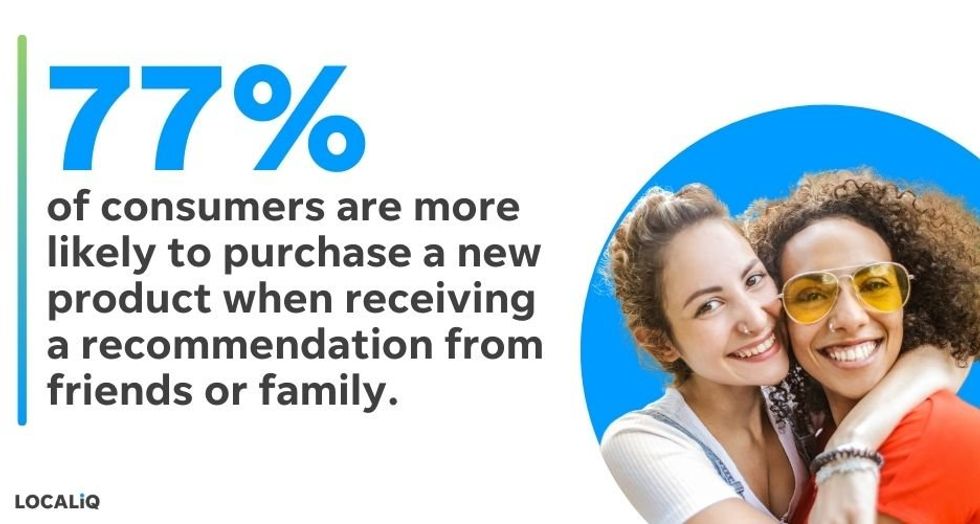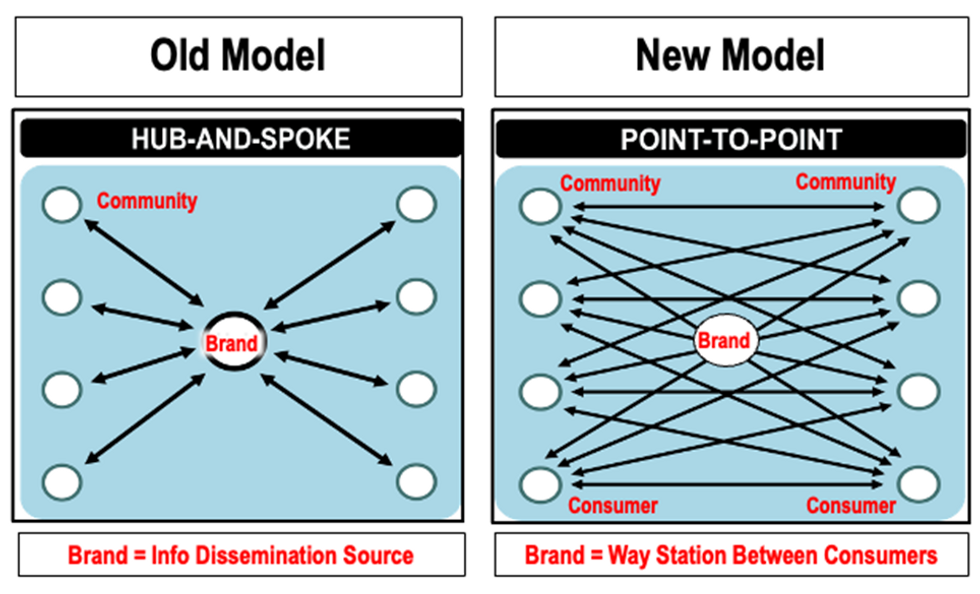
In the summer of 2023, brand communities wield unprecedented purchasing power influence. Barbie enthusiasts are adorning themselves and their lives with everything pink, while Beyonce’s devoted fans fuel a surge in sequins and chrome outfits. Taylor Swift’s dedicated following “Swifties” has taken an unexpected turn (due to her budding Travis Kelce romance), with fans snatching up NFL merchandise, collectively propelling sales to remarkable heights, a testament to the profound impact of brand communities on consumer behavior.
In an era where connections and relationships drive consumer choices, cultivating loyal brand communities has emerged as a critical strategy. This article delves into the significance of brand communities, exploring their advantages, proven methods for building engaged communities, and brand community success stories that have harnessed the power of community-driven marketing.
Why Create Brand Communities?
In the marketing world, the question arises: why should we invest in creating a brand community? It boils down to the type of relationship you desire with your customers. Are you seeking algorithm-driven interactions, fleeting social media ties, or long-lasting bonds of a dedicated community where your brand and customers add value to each other, building a brand ecosystem together?
From the consumer’s perspective, the desire for connection is a fundamental human need for a fulfilling life. It’s these connections and relationships within communities that make them strong. Just as a church isn’t defined by its building but its congregation, or a sports team by its stadium but by its devoted fans, in marketing, it’s not merely about the brand—it’s about cultivating a loyal community.
As Marcus Collins puts it in his book For The Culture, “The brands of the future will be the ones that facilitate community brands that not only identify who we are to the people we like, they become tribal marks because we’re by nature social animals.”
The reason we create a brand community is to cultivate loyal consumers, not just short-term transactional relationships. It’s about empowering people to connect with others who share their values and affinities, fostering a sense of belonging and loyalty far beyond a single purchase.
Exploring The Advantages Of A Brand Community

Source: LOCALiQ
Strong and engaged brand communities have become the cornerstone of successful brand strategies, offering several benefits beyond traditional marketing efforts. Let’s explore them.
- Form Lasting Relationships: Building a brand community is not just about transactions. It’s about fostering enduring relationships between customers and the brand. This deeper connection allows customers to actively participate in the brand’s journey, providing valuable input and feedback and creating a sense of ownership.
- Cultivate Loyalty & Advocacy: Brand communities consist of loyal customers who become advocates of your brand. They actively promote your products or services, contributing to business growth and strengthening the online community. Loyal customers tend to have a longer lifetime value and stay committed.
- Enhance Customer Retention: Brand communities boost customer retention rates by fostering a sense of belonging. Engaged community members are likelier to remain loyal, reducing churn and increasing overall customer satisfaction.
- Quality User-Generated Content: Seventy-nine percent of consumers report that user-generated content has the power to influence their purchase decisions. Brand communities generate user-generated content, from captivating photos to engaging videos. Such content can surpass the brand’s creation and carry more credibility since it originates from the customers.
- Gain Invaluable Insights: Brand communities are a treasure trove of insights. Through interactions and discussion, you gain profound knowledge about your customers—what works, what doesn’t, and their challenges. These insights are often unattainable through other means.
- Drive Product Innovation: Your community members are a source of innovative product and service improvement ideas. Their perspectives and willingness to think outside the box lead to groundbreaking suggestions. This valuable source of data and feedback fuels new product development.
- Behavior Tracking: Brand communities provide cost-effective access to valuable data. You can easily monitor customer behaviors and preferences without formal research. Conducting polls and surveys within your community is more likely to yield responses, providing valuable data for informed decision-making.
Proven Methods For Building Engaged Communities

Image created by Jeff Werderman
A brand community thrives when it serves its people. Here, the community takes center stage, with the brand supporting. It's not about the brand; it’s about the community. The brand is a facilitator, ensuring a safe space for community interactions and amplifying trending content for greater visibility. Additionally, moderation is essential to maintain the overall well-being of the community.
At Pentel of America, brand marketing focuses on the consumer “spokes” (in the hub-and-spoke model). In the past, the brand was the central hub responsible for disseminating content and offers to consumers. However, the focus has shifted to the community, where interactions between members (enabled by the brand) take precedence. This entails focusing on the community and sharing thoughts, content, and recommendations. Pentel Creative Challenges and Pentel Arts Artist Spotlights invite community members to showcase their artistic creations using Pentel and other products. In brand marketing, the evolved role is to prompt, curate, repost, and share user-generated content with the broader community.
What’s key in building an engaged brand user community is first establishing audience credibility. As Simon Sinek puts it, “If you talk about what you believe, you will attract people who believe what you believe.”
Ensuring convenience is essential for consumers to follow and connect with your brand and fellow community members. While building credibility within the community, remember that you’re also nurturing relationships with influencers, subject matter experts, and brand ambassadors. The key is to deliver value, encouraging repeat engagement consistently. This includes promoting trending posts, hosting live webinars, sharing exclusive behind-the-scenes content, and creating specialized subgroups led by subject matter experts for individuals with unique interests.
Brand Community Success Stories

Source: ANKR Agency
GoPro
GoPro enables a global self-expression movement of loyal followers sharing remarkable experiences through user-generated content. They empower users as brand advocates, offering incentives through challenges in exchange for prizes, resulting in stunning content showcasing GoPro’s limitless potential.
Starbucks
In 2008, Starbucks introduced the "My Starbucks Idea" platform, inviting customers and enthusiasts to enhance the company’s offerings. Over the platform’s initial five years, Starbucks received 150,000 ideas, implementing 277. They fostered a sense of community by allowing users to vote and comment on ideas, featuring a public leaderboard for top contributors and popular suggestions. This engagement made customers feel heard. By incorporating fan-generated concepts like cake pops and pumpkin spice lattes, Starbucks enriched its product range.
Pentel of America
Pentel of America targets Gen-Z students, and the brand’s unofficial spokespeople are its 50 Pentel College Student Ambassadors on campuses across the United States—a micro-community of brand advocates. These brand ambassadors introduce Pentel Challenges to students on campus and online on TikTok and Instagram. They share their love for the brand and techniques for engaging students and encouraging their participation in the challenges.
Handling Negative Feedback: Striking The Right Balance

Source: Workest by TriNet Zenefits
The community often self-regulates in navigating criticism, with members countering extreme views. However, brand intervention may be necessary. Warnings can address minor infractions, while extreme cases require content removal. Yet preserving authenticity is vital; establishing clear ground rules upfront helps maintain respectful dialogue, ensuring a harmonious and thriving community.
In a world where connections are paramount, brand communities reign supreme, continually redefining the boundaries of brand-consumer relationships.
For more brand marketing insights, follow Jeff Werderman and Lisa Perry. For a step-by-step guide on developing a brand strategy, check out How To Develop a Brand Strategy by Lisa Perry.
This article was written by Lisa Perry and Jeff Werderman.
- Beyond The Myth: Why Effective Branding Is Crucial For Business Success ›
- 5 Brand Pillars That Are The Foundation Of Your Brand ›
- Building A Strong Community For Career Success: A Path To Elevate Your Trajectory ›
- 5 Lessons From Pharmaceutical Marketing In Dermatology - Work It Daily ›
- Designing Sticky Communities: Why Accountability Matters - Work It Daily ›

 Bigstock
Bigstock Bigstock
Bigstock Bigstock
Bigstock


